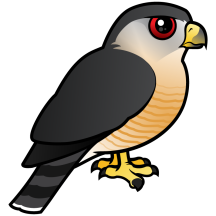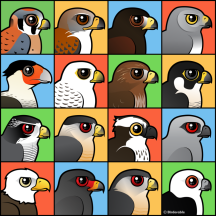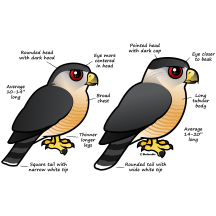The Sharp-shinned Hawk is the smallest species of hawk found in North America. It is an Accipter, a family of birds that includes the Northern Goshawk and the Cooper's Hawk. In this species, females are typically about one third larger and heavier than male birds.
Sharp-shinned Hawks, also called "sharpies," feed primarily on birds, mostly caught on the wing. They pluck their prey before consuming it.
Sharp-shinned Hawks are resident birds in part of their range, while some birds migrate. They breed as far north as Alaska. Some birds winter deep into Central America.
Brazilian (Português brasileiro)
gavião-miúdo
Sparviero striato americano
アシボソハイタカ [ashibosohaitaka]





































